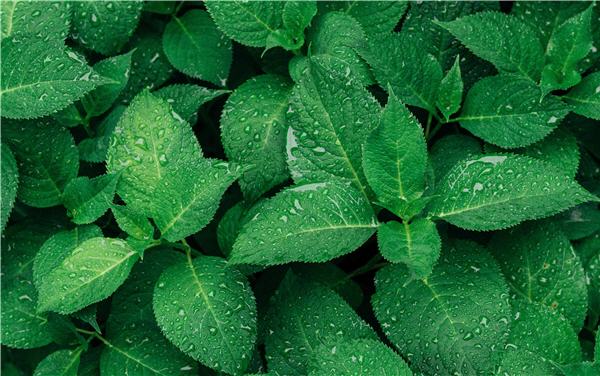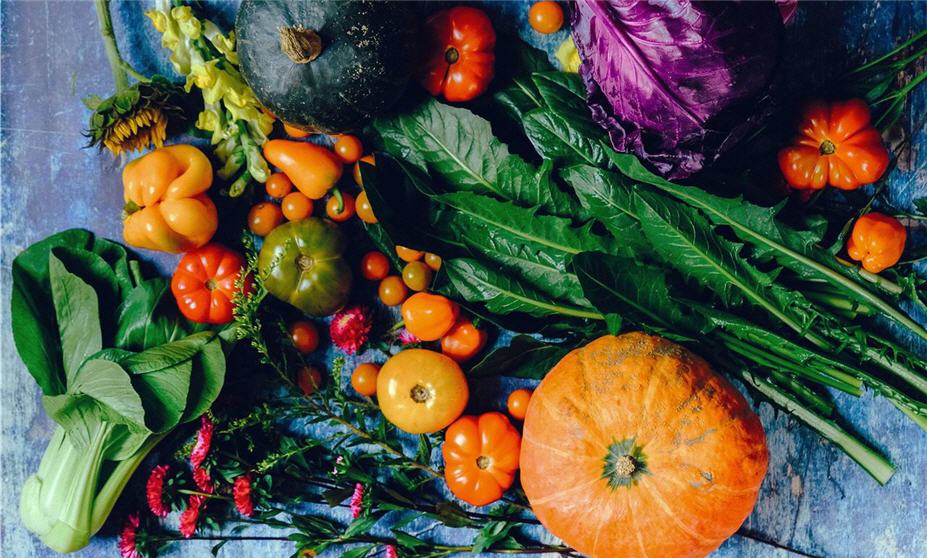
by Anne Cummins | Mar 23, 2021 | Miscellaneous
Spring is in the air – literally! We all notice when we step outside in March that the air smells fresh and invigorating, especially after it’s rained. Just as fall smells like crackly, dry leaves, spring smells like newly turned earth and new growth. According to The Soil Association, that fresh, earthy smell is due to a compound called “geosmin.” Soil dwelling bacteria called Actinomycetes thrive in soil when it’s damp. When temps start to warm up and the soil begins to dry up, Actinomycetes produce tiny spores that release geosmin. Geosmin is especially noticeable after rainfall, because it’s carried into the humid air.
And according to Nature.com “Petrichor, the distinct way that dry earth smells after it rains, comes in part from bacteria in the soil that release a chemical odorant called geosmin.
Petrichor is defined as “a pleasant smell that frequently accompanies the first rain after a long period of warm, dry weather.” The word was first coined in Australia in 1964 by mineral chemists Isabel Joy Bear and Richard Grenfell Thomas in a publication in Nature entitled “The Nature of Argillaceous Odor” referring to the characteristic odor of dry soil or clay when moistened. According to the authors, “The diverse nature of the host material has led us to propose the name ‘petrichor’ for this apparently unique odor which can be regarded as an ‘ichor’ or ‘tenuous essence’ derived from rock or stone.”

by Anne Cummins | Mar 15, 2021 | Miscellaneous
“I’m going down to the garden!”
That was a favorite phrase for my mother-in-law, Sandra, especially early in the morning. She loved to head to her garden at Sea Call Farm to plant, weed and cultivate. She’d often get up at sunrise, eat a little snack, don her old sneakers and drive to the garden to check on her plants and veggies. She took a lot of pleasure in planning the layout of her 20’ x 20’ plot, ordering seeds and beginning anew each spring. She loved heirloom seeds and focused on non GMO and organic seeds and practices. She especially enjoyed planting corn and looked forward to fresh corn on the cob for dinner right after picking. It was a point of pride for her to bring home her own corn. She was the only person I’ve known that actually loved to weed! It brought her a sense of order and organization that she thrived on.
Sandra’s husband Steve was instrumental in the prep work to get the soil ready for planting, and he was keen on planting tomatoes. In his view – the bigger, the better! He loved Big Boy and Early Girl varieties, and he loved picking both ripe tomatoes and green tomatoes. He’d wrap the green tomatoes in newspaper or place them in a brown paper bag to allow them to ripen. Sandy and Steve were generous with their bountiful tomato crop and shared their haul with friends and family each summer and fall. Steve loved his sliced tomatoes chilled (it was a running family joke that the tomatoes must be COLD).
Both Sandra and Steve have passed away (Sandra in August 2020 and Steve in February 2021). Last May, we promised Sandra that we’d help with her garden. We got a late start due to the chilly and damp weather, but we planted by mid-June. Sandra gave us a list of the items she’d like to plant and drew a diagram of the locations for each crop. We fulfilled her wishes and tended to the garden all summer. Sandra was able to check out the garden with us a few times, but as her illness progressed, she stayed close to home. She was thrilled when we brought her fresh green beans, cherry tomatoes, green and red peppers, shallots, basil and parsley.
Steve was able to enjoy his beloved tomatoes and a nice batch of corn on the cob. I cooked down a huge batch of tomatoes to make sauce and presented him with a quart jar of homegrown, homemade pasta sauce. He was a big fan of spaghetti and meatballs and it was nice to share tomatoes with him as he’d done so many times for us. He was a “meat and potatoes” kind of guy, and often raised his own potatoes at the garden, too. It was really fun to go there with him and pull those potatoes out of the sandy soil!
I grew up on a small farm upon which my parents maintained a huge garden for many, many years. They were both teachers, so gardening was a natural fit for keeping busy while enjoying summers off (plus it really helped us maintain a reasonable food budget). I recall my Dad sitting with a yellow legal pad, drawing diagrams for the garden layout and making lists for orders from Burpee’s Seeds. My folks would start many of the plants indoors in the sunny laundry room near the kitchen (it was more of a large storage room with a washer and dryer in it, so there was plenty of space for trays of seedlings and a few grow lights). My Mom took on a large portion of the planting and weeding alongside my Dad, but it was he who really enjoyed pouring over seed catalogs, making selections and mailing in his orders. It was definitely a family project every year to prep the soil, plant seeds and transplant seedlings, weed and water, and ultimately enjoy the harvest. Gardening is in my blood.
I lapsed with gardening quite a bit over the years, but enjoyed helping Sandy and Steve with their garden when we’d visit. Now, my husband Bill and I are full time Orleans residents, and our foray back into gardening last summer was very meaningful and fun for us. We helped Sandy and Steve, we met wonderful people at Sea Call Farm, and it felt great to work at the garden and enjoy lots of fresh produce.

by Anne Cummins | Mar 4, 2021 | Gardening Tips
The seeds have been purchased. The seedling trays or pots are in place. The bag of potting soil is awaiting. Once the seeds have been planted and germinate and start growing, things look great and first move along at a fairly slow and manageable pace. Then, suddenly, seedlings look too tall and skinny, start to fall over, and become tough to transplant. How do we avoid the problem of spindly, leggy seedlings?
The key is even lighting. Plants, of course, will always grow in the direction of a light source, whether it’s natural or artificial. If light is insufficient or too far away, a tall, skinny stem will develop at the expense of the width and strength of the stem. Adequate and even lighting will definitely help prevent scrappy seedlings. Plants placed near a south facing window will fare much better than those near a north facing window. That seems pretty basic, but depending on where you live and how your residence is situated, this can be key. On the Cape, however, a south facing window will probably not provide enough light for fledgling plants. Seedlings need about 12 to 18 hours of light per day to get a strong start.
If there isn’t adequate natural light, a grow light or fluorescent light will be necessary. With a grow light, be sure that it is close enough to the seedlings to prevent the reach and stretch that would occur if placed too far away. The lights should optimally be placed just a few inches above the seedlings as they emerge from the soil, and should optimally be raised above the plants to maintain a consistent distance as they grow taller.
Crowded seedlings will also result in spindly seedlings. So, even if you seed heavily and start out with a thick set of youngsters, don’t be afraid to thin them out to ensure healthy and strong plants. Another tip – keep your soil evenly moist and don’t let it dry out. An oscillating fan near the seedlings can provide “strength training” and prep them for the move to the great outdoors.
Growing strong seedlings will help them survive and thrive when transplanted. They’ll withstand wind and rain much better than leggy plants. It can be pretty frustrating to transplant seedlings and then find them knocked over once they’re outdoors. Better to start out strong!




Recent Comments